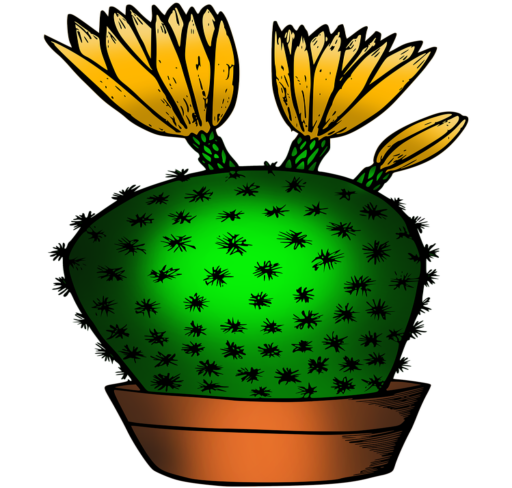Growing a Vegetable Garden in the Southwest USA offers a distinctive set of trials, particularly if you are new to it. So what Shall You be Planting in Your Garden?
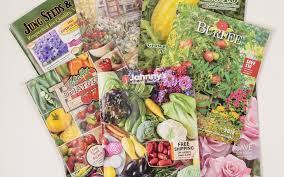
To start planting your garden, you’ll need to get some vegetable seeds. Order your seeds from reputable seed companies to verify the seeds are high-grade and most seed companies offer catalogs for free. There are many catalogs to choose from. Seed companies have excellent websites to help with your choices. Ordering your seeds or plants during some down time in the winter can be very enjoyable and essential come spring.
Seed Catalogs Contain Culture Basic Information for Planting Your Garden
- Indoor Seeding
- Direct Sowing
- Transplanting
- Cultivation
- Soil Preparation
- Insects, Pest, and Diseases
- Harvest and Storage
- Ideas on Planting Your Garden
Most importantly, seed catalogs contain a wealth of information about the seeds and the vegetables they will become.
- They usually will offer days to appearance
- Plant size
- Best soil temperature
- Seed depth
- Plant spacing
- Row spacing
- Minimum germination percentage seeds per gram or ounce
- Fertilizer needs (high, medium or low)
- Whether it is best to transplant or start seed directly in the ground
- They will often offer advice about what disease resistance the seed/plant may have genetically if known.
If possible, order varieties with resistance to diseases that affect your garden. Check with your friends, neighbors, or other experienced gardeners in the area and your local Cooperative Extension Service office for suggestions on varieties that have done well in your area.
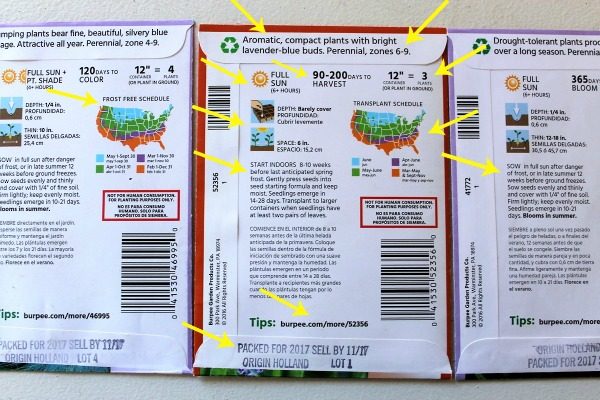
Take notes on how your gardens are doing throughout your growing season and these notes will be invaluable for next year’s decision on seeds and plants for your gardens and planting your garden.
Although, the information from the seed catalog companies is exceptional it is somewhat general since they are trying to sell to all areas of the country. So, it is critical to know planting times and your own microclimate.
Plants can be established in the garden either by direct seeding or by transplanting. However, planting seeds directly into the soil where they will grow is the easiest and most basic method of starting vegetables in a garden. It is also less costly in terms of both time and money. Transplants are often used in cooler areas where growing seasons are short, so vegetables have more time to mature before the first frost.
Planning Your Garden and Preparing the Soil are Perfect Steps to Take Before Planting Seeds. However, it’s also Key to Planting Your Garden.
Before direct seeding, make sure the soil is adequately prepared and well-conditioned.
Use a garden rake to level the garden and remove stones and other debris. Raised beds can be formed by using a shovel and rake to level the top of the bed.
Create a guide for planting seed rows by stretching a string close to the ground between two stakes. How deep you plant seeds will depend on the type of seed. A general rule of thumb is to plant most seed at a depth equivalent to four times the diameter of the seed using twice as many seeds as necessary to ensure a good stand.
Carefully cover the seeds with soil and gently pack the soil with the back side of a hoe, making sure the seeds are not covered deeper than recommended.
Seeds Need to be Kept Damp
Most importantly, keep the seedbed moist until the seeds germinate. Once the plants have developed one or more true leaves, thin plants to recommended spacing. Crops like beets, lettuce, spinach, Swiss chard, and onions can be thinned late, and the thinned vegetables can be used in salads.
A technique for direct seeding is the hill method, which works well for vegetables that should be planted deeper in the soil.
Zucchini, melons, cucumbers, corn, and even chile are often planted in hills. Check the recommended plant spacing for specific vegetables. Use a hoe to make a hole in the soil, then drop four or five seeds in the bottom of the hole. Cover with soil and firm with the back of the hoe. Thin to one to three of the most vigorous seedlings after emergence when plants have their first true leaves.
In Conclusion
The timing of your planting your garden is key to getting the most out of your garden. If you plant too early you may be in danger of experiencing a frost event. To avoid this, plan to get your garden in after the last average frost date in the spring. This information can be found with a quick search through the http://USDA Plant Hardiness Zone Map
The Deserts
When planting your garden, think of your garden as three gardens in one—a spring, a summer, and a fall garden.
Low Hot Desert
Low Hot Desert areas like Phoenix, AZ at an altitude of 1086 feet and Yuma, AZ at an altitude of 141 feet are Hot Low Desert areas.
Middle Desert
Middle Desert (often referred to as Warm/Lower-High Desert) has cities like El Paso, TX at an altitude 3740 feet, Las Cruces, NM at an altitude of 3900 feet and Tucson, AZ at 2389 feet. This middle desert is still very dry but has cooler temperatures than the very hot low desert.
High Desert
High Desert cities such as Albuquerque, NM at an altitude of 5312 feet, Santa Fe, NM at an altitude of 7199 feet and Pecos, NM at altitude of 6923 feet
The Planting of Your Garden and Harvest Times are Different for each Desert Area and will be explained in the charts that follow.
Below you will find: Planting guides for each desert area.
Planting Your Garden in Low Desert
Very Hot Summers with Many Days of 110°F or Warmer.
Some of the many cities in the Low Hot Desert are: Phoenix, Az, Tempe AZ, Youngtown, AZ Litchfield Park, AZ, Carefree, AZ, Buckeye, AZ. The desert resort cities of Palm Springs and Palm Desert, CA are also located in the low, hot, Sonoran Desert, which also includes Yuma, AZ, and runs along the lower part of Arizona and the lower Colorado River. Other cities in the Sonoran Desert of California include Indio, Coachella, Calexico, El Centro, Imperial Valley and Blythe.
Most importantly, plant your cool-season plants from October to March. The rest of the year select from warm-season plants. The Spring garden will feature plants that like lengthening days, dry beans especially. Summer gardens favor heat lovers like basil and corn. Autumn gardens favor a few cool-season plants like bush beans and the warm-season plants that respond to shortening days, like winter squash. Planting is done in fall, as winter is the best season for establishing new plants and renewing growth of existing ones in the low desert.
Harvest times are in June, July, September, October, November and December. If you don’t mind covering plants during frosts, you can often have veggies in February and March as well.
Some cool-season planting includes Beet, Broccoli, Cabbages, Carrot, Lettuce, Onions, Peas, Potatoes, Radish, Spinach and Turnips. These are hardy, frost tolerant plants. They can easily be planted in the fall, winter or early spring.
On average, the frost-free growing season starts Feb 26 and ends Nov 20, totaling 268 days.
Planting Your Garden in the Low Desert for Spring Harvests
Broccoli
Cole crops like Broccoli, , and cabbage can be direct seeded into your garden around January 14, assuming the ground can be worked, but it’s better to start them indoors around December 17 and then transplant them into the garden around February 6. Do the same with lettuce and spinach.
Onions, Potatoes and Peas
Plant Onions and Potatoes around December 27. Sow the seeds of Peas (sugar snap and English) at the same time. If the ground is still frozen, then plant these as soon as the ground thaws.
Tomatoes, Peppers and Eggplant
If you want to grow Tomatoes, Peppers, and Eggplant, start those indoors around December 17. Then around February 21 as soon as no frost is forecast, go ahead and transplant those into the ground.
Green Beans, Cauliflower, Corn, Zucchini, Pumpkin, and Watermelon
Now, for all the summer vegetables like Green Beans, Cauliflower, Corn, Zucchini, Pumpkin, and Watermelon, plant those seeds directly into the ground around February 25, or if your soil is still very cold, plant once the soil is near 60 degrees F in temperature.
| Produce | Sow seeds indoors | Transplant seedlings into the garden | Direct sow seeds |
| Asparagus | n/a | Jan 12 – Jan 27 | n/a |
| Green Beans | n/a | n/a | Feb 26 – Mar 25 |
| Beet | n/a | n/a | Jan 1 – Jan 15 |
| Broccoli | Dec 18 – Jan 1 | Jan 29 – Feb 12 | n/a |
| Brussel Sprouts | Dec 18 – Jan 1 | Jan 29 – Feb 12 | n/a |
| Cabbage | Dec 18 – Jan 1 | Jan 29 – Feb 12 | n/a |
| Cantaloup | n/a | n/a | Feb 12 – Feb 26 |
| Carrot | n/a | n/a | Jan 15 – Feb 12 |
| Cauliflower | Dec 18 – Jan 1 | Jan 29 – Feb 12 | n/a |
| Collards | Dec 18 – Jan 1 | Jan 29 – Feb 12 | n/a |
| Corn | n/a | n/a | Feb 26 – Mar 11 |
| Cucumber | n/a | n/a | Feb 26 – Mar 11 |
| Eggplants | Dec 18 – Jan 1 | Feb 26 – Mar 11 | n/a |
| Pumpkins and squash | n/a | n/a | Feb 26 – Mar 11 |
| Kale | Dec 18 – Jan 1 | Jan 29 – Feb 12 | n/a |
| Kohlrabi | Dec 18 – Jan 1 | Jan 29 – Feb 12 | n/a |
| Lettuce | Dec 18 – Jan 1 | Jan 15 – Feb 12 | Jan 15 – Feb 12 |
| Mustard | Dec 18 – Jan 1 | Jan 29 – Feb 12 | n/a |
| Okra | n/a | n/a | Feb 26 – Mar 11 |
| Onion | Dec 11 – Dec 18 | Dec 28 – Jan 27 | n/a |
| Pea | n/a | n/a | Dec 28 – Jan 27 |
| Pea | n/a | n/a | Feb 26 – Mar 25 |
| Pea | n/a | n/a | Dec 28 – Jan 27 |
| Peppers | Dec 18 – Jan 1 | Feb 26 – Mar 11 | n/a |
| Potato | n/a | n/a | Dec 28 – Jan 27 |
| Radish | n/a | n/a | Jan 12 – Mar 11 |
| Spinach | Dec 18 – Jan 1 | Jan 29 – Feb 12 | Jan 12 – Feb 12 |
| Sweet Potatoes | n/a | Feb 26 – Mar 18 | n/a |
| Tomatoes | Dec 18 – Jan 1 | Feb 26 – Mar 11 | n/a |
| Watermelon | n/a | n/a | Feb 26 – Mar 11 |
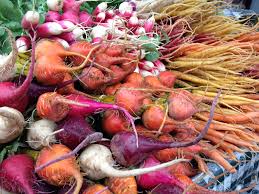
Fall Planting Your Garden Strategy for the Low Desert
Gardening in the fall is more perplexing than spring planting, because you are in a contest to get your crops mature and harvested before the winter frosts begin, around November 20. Consider how much time each variety needs between planting and picking. Typically, the “Days to Harvest” are present on the seed packet.
Most Tomatoes, Peppers and Eggplant, for example, require around 100 days to harvest, so you’d want to transplant those into the ground around August 12. It’s important to remember that the numbers in this fall planting guide are only a starting point.
Fall is the time to plant Garlic. Around October 6, take your cloves apart and plant the toes about 3 to 4 inches deep. The way to be sure the soil is warm enough is to use a soil thermometer. When the soil temperature is 60° at a depth of 4 inches, plant your garlic.
Cole crops like Broccoli, Cauliflower, and Cabbages can be direct seeded into your garden around September 11, it’s best to start them indoors around July 23 and then transplant them into the garden around September 1. Do the same with Lettuce and Spinach.
Plant Peas directly around September 6. The hot weather vegetables like Green Beans, Corn. Cucumbers, Watermelon, and Sunflowers, need to have seeds directly planted into the ground around August 7.
Dates with Specific Plants for the Low Desert Areas
| Crop | Sow seeds indoors | Transplant seedlings into the garden | Direct sow seeds |
| Beans | n/a | n/a | Aug 7 – Sep 6 |
| Beet | n/a | n/a | Sep 6 – Oct 21 |
| Broccoli | Jun 26 – Aug 10 | Aug 7 – Sep 21 | n/a |
| Brussel Sprouts | Jun 26 – Aug 10 | Aug 7 – Sep 21 | n/a |
| Cabbage | Jun 26 – Aug 10 | Aug 7 – Sep 21 | n/a |
| Cantaloup | n/a | n/a | Jul 23 – Aug 7 |
| Carrot | n/a | n/a | Aug 22 – Oct 21 |
| Cauliflower | Jun 26 – Aug 10 | Aug 7 – Sep 21 | n/a |
| Chard | n/a | n/a | Aug 7 – Oct 21 |
| Collards | Jul 23 – Sep 6 | Aug 22 – Oct 6 | n/a |
| Corn | n/a | n/a | Aug 7 – Aug 22 |
| Cucumbers | n/a | n/a | Aug 7 – Aug 22 |
| Eggplants | Jun 11 – Jun 26 | Jul 23 – Aug 7 | n/a |
| Garlic | n/a | n/a | Sep 6 – Oct 21 |
| Pumpkins and squash | n/a | n/a | Jul 8 – Aug 7 |
| Kale | Jun 26 – Aug 10 | Aug 7 – Sep 21 | n/a |
| Kohlrabi | Jun 26 – Aug 10 | Aug 7 – Sep 21 | n/a |
| Lettuce | Aug 22 – Sep 21 | Sep 21 – Oct 21 | Sep 21 – Oct 21 |
| Mustards | n/a | n/a | Sep 21 – Oct 21 |
| Okra | n/a | n/a | Jul 8 – Aug 7 |
| Onion | n/a | n/a | Oct 21 – Oct 31 |
| Parsley | Jul 8 – Aug 22 | Aug 22 – Oct 6 | n/a |
| Pea | n/a | n/a | Aug 22 – Sep 21 |
| Pea | n/a | n/a | Jul 8 – Aug 7 |
| Pea | n/a | n/a | Aug 22 – Sep 21 |
| Peppers | Jun 16 – Jul 1 | Jul 28 – Aug 12 | n/a |
| Potato | n/a | n/a | Aug 22 – Sep 21 |
| Radish | n/a | n/a | Sep 21 – Oct 21 |
| Spinach | Aug 7 – Sep 21 | Sep 6 – Oct 21 | Sep 6 – Oct 21 |
| Tomatoes | Jun 16 – Jul 1 | Jul 28 – Aug 12 | n/a |
| Turnip | n/a | n/a | Oct 6 – Nov 5 |
| Watermelon | n/a | n/a | Jul 8 – Aug 7 |
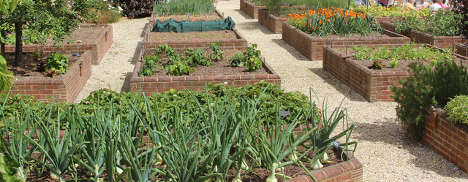
Middle Desert (Often referred to as Warm/Lower-High Desert)
In the Southwest warm or intermediate desert cover: Tucson and Sedona, Arizona; Roswell and Las Cruces in southern New Mexico; El Paso and Midland-Odessa in southwest Texas; St. George Utah; and Las Vegas Nevada.
Las Vegas is on the edge of being a Low Desert area due to many high temperatures in the summer.
Plant your cool-season garden in early September and you can enjoy leafy greens into April. March into May is the is the Spring garden, and the opportunity to get your tomato fix. Summer gardens start as the temperatures hit 100° F in May. Autumn gardens feature a few cool-season plants like bush beans and the warm-season plants that respond to shortening days, like winter squash.
Spring Planting Strategy for Planting Your Garden in the Middle Desert
Cole crops like broccoli, cauliflower, and cabbage can be direct seeded into your garden around March 30, assuming the ground can be worked, but it’s better to start them indoors around March 2 and then transplant them into the garden around April 21. Do the same with lettuce and spinach.
Plant onion starts and potatoes around March 12. Sow the seeds of peas (sugar snap and English) at the same time. If the ground is still frozen, then plant these as soon as the ground thaws.
To grow tomatoes, peppers, and eggplants. Start these indoors around March 2. Then, around May 7 you should start watching the weather forecast and, as soon as no frost is forecast, go ahead and transplant those into the ground.
Now, for all the summer vegetables like beans, cowpeas, corn, squashes, pumpkins, cucumbers, watermelons, and sunflowers, you should plant those seeds directly into the ground around May 11, or if your soil is still very cold, once the soil is near 60° F in temperature. Note that your location has a shorter than average growing season. Many summer vegetables need more days to mature than your area will provide. Get a head-start by starting these summer vegetables indoors around April 21 and transplant those seedlings out after the danger of frost is past.
Spring Dates with Specific Plants for Planting Your Garden in the Middle Desert
| Crop | Sow seeds indoors | Transplant seedlings into the garden | Direct sow seeds |
| Asparagus | n/a | Mar 27 – Apr 11 | n/a |
| Beans | n/a | n/a | May 11 – Jun 8 |
| Beet | n/a | n/a | Mar 16 – Mar 30 |
| Broccoli | Mar 2 – Mar 16 | Apr 13 – Apr 27 | n/a |
| Brussel Sprouts | Mar 2 – Mar 16 | Apr 13 – Apr 27 | n/a |
| Cabbage | Mar 2 – Mar 16 | Apr 13 – Apr 27 | n/a |
| Cantaloup | n/a | n/a | Apr 27 – May 11 |
| Carrot | n/a | n/a | Mar 30 – Apr 27 |
| Cauliflower | Mar 2 – Mar 16 | Apr 13 – Apr 27 | n/a |
| Chard | n/a | n/a | Mar 30 – Apr 13 |
| Collards | Mar 2 – Mar 16 | Apr 13 – Apr 27 | n/a |
| Corn | n/a | n/a | May 11 – May 25 |
| Cucumbers | n/a | n/a | May 11 – May 25 |
| Eggplants | Mar 2 – Mar 16 | May 11 – May 25 | n/a |
| Pumpkins and squash | n/a | n/a | May 11 – May 25 |
| Kale | Mar 2 – Mar 16 | Apr 13 – Apr 27 | n/a |
| Kohlrabi | Mar 2 – Mar 16 | Apr 13 – Apr 27 | n/a |
| Lettuce | Mar 2 – Mar 16 | Mar 30 – Apr 27 | Mar 30 – Apr 27 |
| Mustard | Mar 2 – Mar 16 | Apr 13 – Apr 27 | n/a |
| Okra | n/a | n/a | May 11 – May 25 |
| Onion | Feb 24 – Mar 2 | Mar 12 – Apr 11 | n/a |
| Pea | n/a | n/a | Mar 12 – Apr 11 |
| Pea | n/a | n/a | May 11 – Jun 8 |
| Pea | n/a | n/a | Mar 12 – Apr 11 |
| Peppers | Mar 2 – Mar 16 | May 11 – May 25 | n/a |
| Potato | n/a | n/a | Mar 12 – Apr 11 |
| Radish | n/a | n/a | Mar 27 – May 25 |
| Spinach | Mar 2 – Mar 16 | Apr 13 – Apr 27 | Mar 27 – Apr 27 |
| Sweet Potatoes | n/a | May 11 – Jun 1 | n/a |
| Tomatoes | Mar 2 – Mar 16 | May 11 – May 25 | n/a |
| Watermelon | n/a | n/a | May 11 – May 25 |
Fall Dates with Specific Plants for Planting Your Garden in the Middle Desert
| Crop | Sow seeds indoors | Transplant seedlings into the garden | Direct sow seeds |
| Beans | n/a | n/a | Jun 27 – Jul 27 |
| Beet | n/a | n/a | Jul 27 – Sep 10 |
| Broccoli | May 16 – Jun 30 | Jun 27 – Aug 11 | n/a |
| Brussel Sprouts | May 16 – Jun 30 | Jun 27 – Aug 11 | n/a |
| Cabbage | May 16 – Jun 30 | Jun 27 – Aug 11 | n/a |
| Cantaloup | n/a | n/a | Jun 12 – Jun 27 |
| Carrot | n/a | n/a | Jul 12 – Sep 10 |
| Cauliflower | May 16 – Jun 30 | Jun 27 – Aug 11 | n/a |
| Chard | n/a | n/a | Jun 27 – Sep 10 |
| Collards | Jun 12 – Jul 27 | Jul 12 – Aug 26 | n/a |
| Corn | n/a | n/a | Jun 27 – Jul 12 |
| Cucumbers | n/a | n/a | Jun 27 – Jul 12 |
| Eggplants | May 1 – May 16 | Jun 12 – Jun 27 | n/a |
| Garlic | n/a | n/a | Jul 27 – Sep 10 |
| Pumpkins and squash | n/a | n/a | May 28 – Jun 27 |
| Kale | May 16 – Jun 30 | Jun 27 – Aug 11 | n/a |
| Kohlrabi | May 16 – Jun 30 | Jun 27 – Aug 11 | n/a |
| Lettuce | Jul 12 – Aug 11 | Aug 11 – Sep 10 | Aug 11 – Sep 10 |
| Mustards | n/a | n/a | Aug 11 – Sep 10 |
| Okra | n/a | n/a | May 28 – Jun 27 |
| Onion | n/a | n/a | Sep 10 – Sep 20 |
| Parsley | May 28 – Jul 12 | Jul 12 – Aug 26 | n/a |
| Pea | n/a | n/a | Jul 12 – Aug 11 |
| Pea | n/a | n/a | May 28 – Jun 27 |
| Pea | n/a | n/a | Jul 12 – Aug 11 |
| Peppers | May 6 – May 21 | Jun 17 – Jul 2 | n/a |
| Potato | n/a | n/a | Jul 12 – Aug 11 |
| Radish | n/a | n/a | Aug 11 – Sep 10 |
| Spinach | Jun 27 – Aug 11 | Jul 27 – Sep 10 | Jul 27 – Sep 10 |
| Tomatoes | May 6 – May 21 | Jun 17 – Jul 2 | n/a |
| Turnip | n/a | n/a | Aug 26 – Sep 25 |
| Watermelon | n/a | n/a | May 28 – Jun 27 |
Planting Strategies in the High Desert for Planting Your Garden Spring Harvest
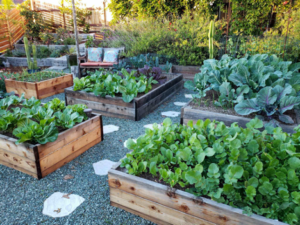
If you want to plant in containers in a sheltered area, you can have a Winter garden September to April. Otherwise plant your cool-season plants in February for cold tolerant plants like snow peas and lettuce. The high deserts and mountains of the West average frost days are just averaged and can vary. Even though it might not freeze in early September, the weather can turn cooler than necessary to, say, ripen tomatoes. Here are some strategies to grow food in Southwest mountains and high deserts.
Use raised beds and containers, which warm faster than the ground based gardens.
Select Short season varieties.
Compost tea and worm castings help plants thrive without burning tender plants or forcing growth too quickly.
You also can increase your chances of growing some foods by choosing varieties with smaller fruit.
If this is your first year to grow vegetables in your location, start with some easy-to-grow varieties, especially those that mature early in the year. Greens of all kinds can reach maturity in 20 to 30 days. Grow some lettuce, or spinach before the summer heat, or in a shaded area during summer. Zucchini and other summer squash usually yield the first fruit in 50 days or less and keep producing. Melons and winter squash, on the other hand, need a longer season of warmth.
Spring Planting Strategy for the High Desert
Cole crops like broccoli, cauliflower, and cabbage can be direct seeded into your garden around March 5, assuming the ground can be worked, but it’s better to start them indoors around February 6 and then transplant them into the garden around March 27. Do the same with lettuce and spinach.
Plant onion starts and potatoes around February 16. Sow the seeds of peas (sugar snap and English) at the same time. If the ground is still frozen, then plant these as soon as the ground thaws.
Tomatoes, peppers, and eggplants need to be started indoors around February 6. Then, around April 12 you should start watching the weather forecast and, as soon as no frost is forecast, go ahead and transplant those into the ground. Now, for all the summer vegetables like beans, cowpeas, corn, squashes, pumpkins, cucumbers, watermelons, and sunflowers, you should plant those seeds directly into the ground around April 16, or if your soil is still very cold, once the soil is near 60° F in temperature.
Spring Dates with Specific Plants for the High Desert Areas
| Crop | Sow seeds indoors | Transplant seedlings into the garden | Direct sow seeds |
| Asparagus | n/a | Mar 2 – Mar 17 | n/a |
| Beans | n/a | n/a | Apr 16 – May 14 |
| Beet | n/a | n/a | Feb 20 – Mar 5 |
| Broccoli | Feb 6 – Feb 20 | Mar 19 – Apr 2 | n/a |
| Brussel Sprouts | Feb 6 – Feb 20 | Mar 19 – Apr 2 | n/a |
| Cabbage | Feb 6 – Feb 20 | Mar 19 – Apr 2 | n/a |
| Cantaloup | n/a | n/a | Apr 2 – Apr 16 |
| Carrot | n/a | n/a | Mar 5 – Apr 2 |
| Cauliflower | Feb 6 – Feb 20 | Mar 19 – Apr 2 | n/a |
| Chard | n/a | n/a | Mar 5 – Mar 19 |
| Collards | Feb 6 – Feb 20 | Mar 19 – Apr 2 | n/a |
| Corn | n/a | n/a | Apr 16 – Apr 30 |
| Cucumbers | n/a | n/a | Apr 16 – Apr 30 |
| Eggplants | Feb 6 – Feb 20 | Apr 16 – Apr 30 | n/a |
| Pumpkins and squash | n/a | n/a | Apr 16 – Apr 30 |
| Kale | Feb 6 – Feb 20 | Mar 19 – Apr 2 | n/a |
| Kohlrabi | Feb 6 – Feb 20 | Mar 19 – Apr 2 | n/a |
| Lettuce | Feb 6 – Feb 20 | Mar 5 – Apr 2 | Mar 5 – Apr 2 |
| Mustard | Feb 6 – Feb 20 | Mar 19 – Apr 2 | n/a |
| Okra | n/a | n/a | Apr 16 – Apr 30 |
| Onion | Jan 30 – Feb 6 | Feb 16 – Mar 17 | n/a |
| Pea | n/a | n/a | Feb 16 – Mar 17 |
| Pea | n/a | n/a | Apr 16 – May 14 |
| Pea | n/a | n/a | Feb 16 – Mar 17 |
| Peppers | Feb 6 – Feb 20 | Apr 16 – Apr 30 | n/a |
| Potato | n/a | n/a | Feb 16 – Mar 17 |
| Radish | n/a | n/a | Mar 2 – Apr 30 |
| Spinach | Feb 6 – Feb 20 | Mar 19 – Apr 2 | Mar 2 – Apr 2 |
| Sweet Potatoes | n/a | Apr 16 – May 7 | n/a |
| Tomatoes | Feb 6 – Feb 20 | Apr 16 – Apr 30 | n/a |
| Watermelon | n/a | n/a | Apr 16 – Apr 30 |
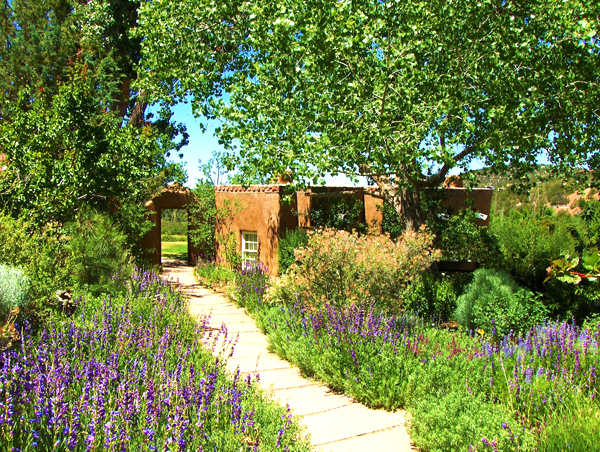
Fall Dates with Specific Plants for the High Desert Areas
| Crop | Sow seeds indoors | Transplant seedlings into the garden | Direct sow seeds |
| Beans | n/a | n/a | Jul 15 – Aug 14 |
| Beet | n/a | n/a | Aug 14 – Sep 28 |
| Broccoli | Jun 3 – Jul 18 | Jul 15 – Aug 29 | n/a |
| Brussel Sprouts | Jun 3 – Jul 18 | Jul 15 – Aug 29 | n/a |
| Cabbage | Jun 3 – Jul 18 | Jul 15 – Aug 29 | n/a |
| Cantaloup | n/a | n/a | Jun 30 – Jul 15 |
| Carrot | n/a | n/a | Jul 30 – Sep 28 |
| Cauliflower | Jun 3 – Jul 18 | Jul 15 – Aug 29 | n/a |
| Chard | n/a | n/a | Jul 15 – Sep 28 |
| Collards | Jun 30 – Aug 14 | Jul 30 – Sep 13 | n/a |
| Corn | n/a | n/a | Jul 15 – Jul 30 |
| Cucumbers | n/a | n/a | Jul 15 – Jul 30 |
| Eggplants | May 19 – Jun 3 | Jun 30 – Jul 15 | n/a |
| Garlic | n/a | n/a | Aug 14 – Sep 28 |
| Pumpkins and squash | n/a | n/a | Jun 15 – Jul 15 |
| Kale | Jun 3 – Jul 18 | Jul 15 – Aug 29 | n/a |
| Kohlrabi | Jun 3 – Jul 18 | Jul 15 – Aug 29 | n/a |
| Lettuce | Jul 30 – Aug 29 | Aug 29 – Sep 28 | Aug 29 – Sep 28 |
| Mustards | n/a | n/a | Aug 29 – Sep 28 |
| Okra | n/a | n/a | Jun 15 – Jul 15 |
| Onion | n/a | n/a | Sep 28 – Oct 8 |
| Parsley | Jun 15 – Jul 30 | Jul 30 – Sep 13 | n/a |
| Pea | n/a | n/a | Jul 30 – Aug 29 |
| Pea | n/a | n/a | Jun 15 – Jul 15 |
| Pea | n/a | n/a | Jul 30 – Aug 29 |
| Peppers | May 24 – Jun 8 | Jul 5 – Jul 20 | n/a |
| Potato | n/a | n/a | Jul 30 – Aug 29 |
| Radish | n/a | n/a | Aug 29 – Sep 28 |
| Spinach | Jul 15 – Aug 29 | Aug 14 – Sep 28 | Aug 14 – Sep 28 |
| Tomatoes | May 24 – Jun 8 | Jul 5 – Jul 20 | n/a |
| Turnip | n/a | n/a | Sep 13 – Oct 13 |
| Watermelon | n/a | n/a | Jun 15 – Jul 15 |
Extend the Growing Season
You can’t control the weather, but you can make it easier for your edible plants to get a jump start or thrive through weather extremes. Here are a few tips that have worked for us:
Start seeds indoors. Planting a healthy start that you’ve grown and hardened off (gradually helped adapt to outdoor conditions) can extend the season. If you don’t want to start seeds indoors, buy starter plants from a trusted source.
Succession Planting
Refers to numerous planting approaches that increase plant availability during a growing season by making efficient use of space and timing. This strategy of planting the same crop in waves, a few weeks apart, can help ensure a longer harvest. Staggering planting can help you prepare for the unexpected.
Use succession planting. This strategy of planting the same crop in waves, a few weeks apart, can help ensure a longer harvest. For example, we had a really cool August one year, and our tomatoes just stopped ripening. Another year, it was too hot for them to set fruit at peak season. Staggering planting can help you prepare for the unexpected.
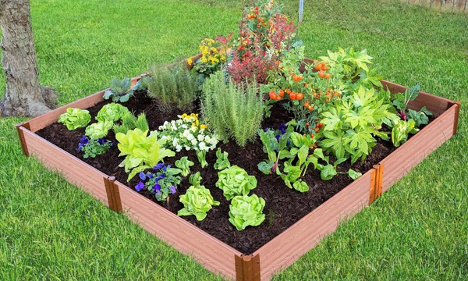
Two or more vegetables in succession
There are many ways to grow additional plants in the same area. For example, leaf lettuces and snow peas in the early spring might be replaced by bush beans. The bush beans could then be replaced by garlic in the fall. Some of the best vegetables for succession plantings are dill, broccoli, arugula, spinach, cilantro, carrots, green onions, beans, lettuce, mustard, and radishes.
Successive Planting of the Same Vegetable
Planting of the same vegetable at different times, rather than all at once. The plants mature at staggered dates, creating a continued harvest over a longer period. This will help avoid having everything harvested at the same time and allow harvesting over a staggered period of time.
Two or More Vegetables Concurrently
The vegetables must be non-competing, often with different maturity dates and are planted in various patterns. This method is also known as Interplanting: The practice of growing two different vegetables in the same space.
